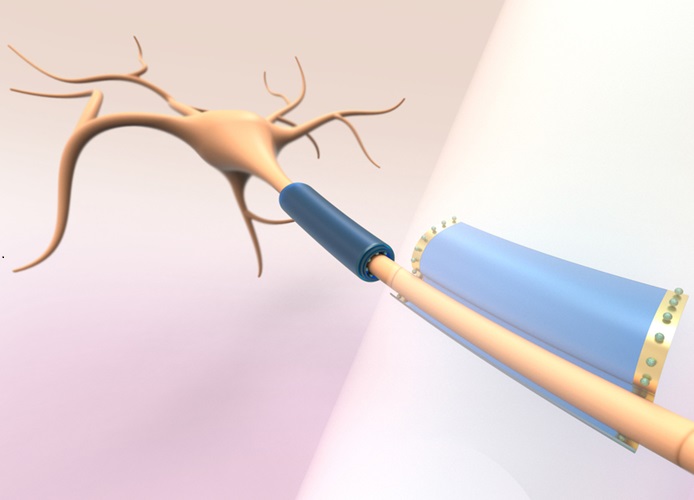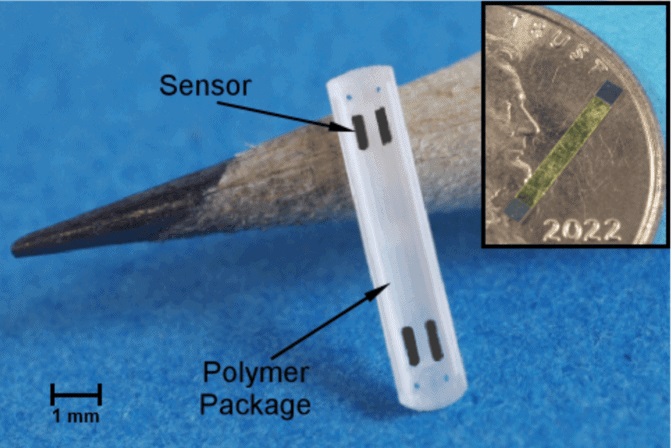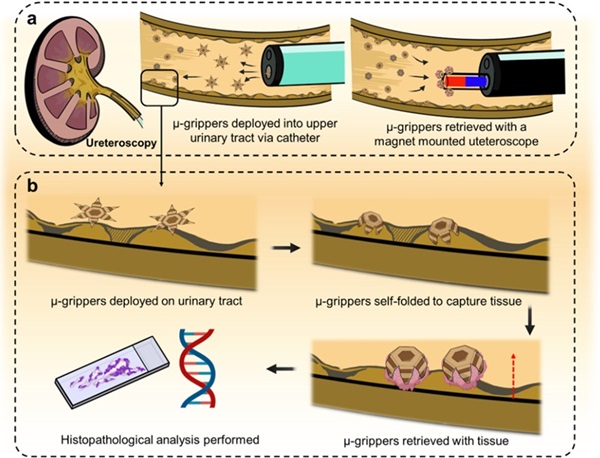Microscopic Wearables Snugly Wrap Around Neurons to Probe Brain’s Subcellular Regions
Posted on 01 Nov 2024
Wearable devices like smartwatches and fitness trackers monitor various bodily functions, such as heart rate and sleep patterns. Researchers have now created microscopic wearable devices that may offer similar capabilities for individual cells inside the body.
Brain cells exhibit complex shapes, making it challenging to design bioelectronic implants that conform closely to neurons or their processes. For example, axons are slender, tail-like extensions that connect to the neuron’s cell body, and they can vary significantly in length and curvature. Additionally, axons and other cellular components are delicate, requiring any interfacing device to be soft enough to make effective contact without causing damage. Scientists at the Massachusetts Institute of Technology (MIT, Cambridge, MA, USA) have developed battery-free, subcellular-sized devices made from a soft polymer that can gently wrap around various parts of neurons, such as axons and dendrites, without harming the cells when actuated wirelessly with light. By snugly wrapping neuronal processes, these devices could measure or modulate a neuron's electrical and metabolic activity at a subcellular level.

Since these devices are wireless and can float freely, the researchers envision a future where thousands of tiny devices could be injected into the body and activated noninvasively using light. By manipulating the light intensity shined from outside the body, researchers could precisely control how the devices wrap around cells. Enfolding axons, which transmit electrical impulses between neurons and to other body parts, could potentially help restore some of the neuronal degradation associated with diseases like multiple sclerosis (MS). In healthy conditions, myelin serves as an insulating layer around axons, facilitating efficient electrical impulse transmission. In non-myelinating diseases such as MS, neurons lose their insulating myelin sheets, and currently, there is no biological method to regenerate them. By functioning as synthetic myelin, these wearables might aid in restoring neuronal function for MS patients.
In the long term, these devices could be integrated with other materials to form tiny circuits capable of measuring and modulating individual cells. The researchers published their findings in Nature Communications Chemistry, demonstrating how the devices can be combined with optoelectrical materials to stimulate cells. Furthermore, atomically thin materials can be patterned on top of the devices, allowing them to roll into microtubes without breaking. This advancement opens up possibilities for incorporating sensors and circuits into the devices. Additionally, their close connection with cells means that minimal energy would be required to stimulate subcellular regions, potentially enabling researchers or clinicians to modulate the electrical activity of neurons to treat brain diseases.
“The concept and platform technology we introduce here is like a founding stone that brings about immense possibilities for future research,” said Deblina Sarkar, the AT&T Career Development Assistant Professor in the MIT Media Lab and the senior author of a paper on this technique. “It is exciting to demonstrate this symbiosis of an artificial device with a cell at an unprecedented resolution. We have shown that this technology is possible.”













